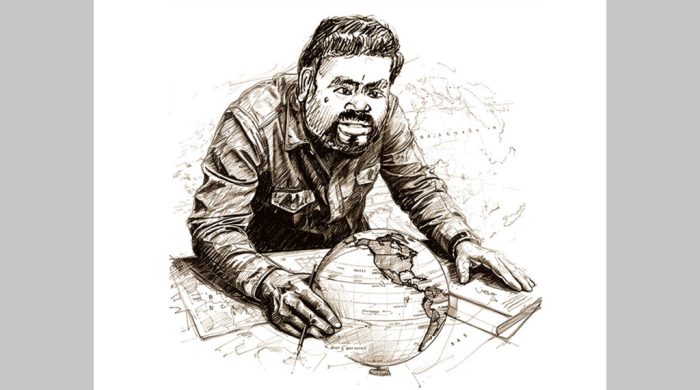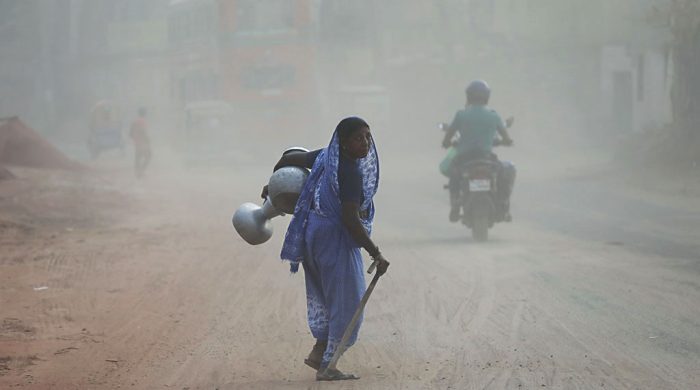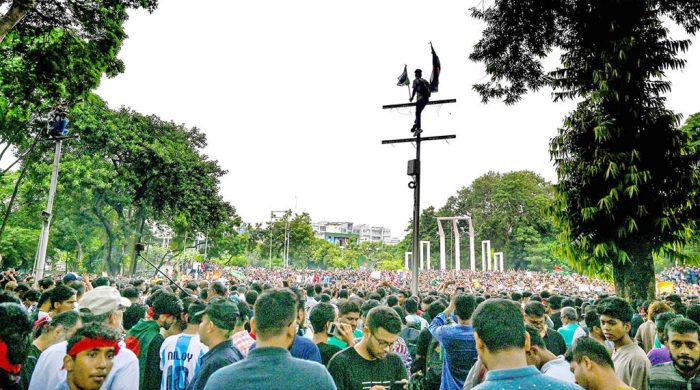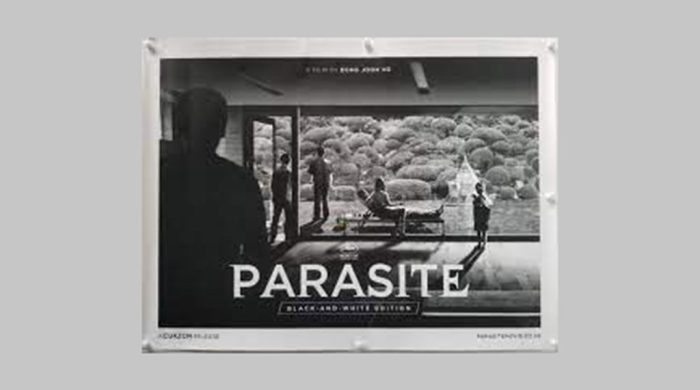November – the Tragic Month of 1975

- Update Time : Sunday, November 7, 2021
- 129 Time View

Bangladesh has two tragic months, August and November of 1975. On 15th August of the year the Father of the Nation, Bangabandhu Sheikh Mujibur Rahman was killed with this entire family by a group of sacked and serving junior military officers. This was a tragedy incomparable in history. In a matter of few weeks on 3rd November, came the tragedy of brutally killing of the four national leaders inside the Dhaka central jail where they were being held after the killing of the Father of the Nation as they refused to cooperate with the killers’ stooge President Khondakar Mostaq. These were the same leaders who led our war of liberation in the absence of the Father of the Nation who was languishing in Pakistani prison waiting to be sentenced to death. However, the decorated hero Major General Khaled Mosharraf staged a military coup on 2nd November presumably to unseat KhondakarMostaq Ahmed and restore the Chain of Command in the army that was virtually lost after 15th August. However General Khaled Mosharraf failed to consolidate his position and in a matter of days he, along with a number of celebrated brave war heroes, were brutally murdered on 7th November and General Zia, the founder of BNP, took over the control of the country Khondakar Mostaq being thrown out. Zia ruled the country till 1981 mostly though imposing night time curfew and as luck would have it he himself was killed in another aborted military coup on 30th May 1981 in Chittagong.
Every year when the month of August comes, Bangabandhu’s one of the two surviving daughters, the current Prime Minister Sheikh Hasina asks a very pertinent question. ‘If Awami League has so many leaders and workers why was my father lying in a pool of blood for thirty two hours on 15th and 16th of August in our Dhanmondi family residence’? No one has any acceptable answer. This year she even mentioned two names and said what was the then Army Chief and the person in-charge of Rakkhi Bahini doing when the conspiracy of killing of her father and the entire family was being hatched? Nearly forty six years later the General Secretary of Awami League Obaidul Quaker asked few days back where were the Awami League and its sister organisations’ workers and leaders when recently a section of thugs unleashed a conspiratorial move to destroy the communal harmony in some parts of the country during the just completed Durga Puja? To add to all these unanswered questions another question has been raised this year, what was Awami League and its leaders (those out of prison) the members of its sister organizations doing between 15th August and 7th November of 1975? Though there were some sporadic protest in certain parts of the country, what prevented the party workers from organizing any concerted movement against the 15th August or 3rd November killing? Or why were they silent even after the killings of 7th November of the freedom fighters and when General Zia illegally seized the state power? Four and half a decades later still no one could give a satisfactory answer to any of these questons.
A day from now will be 7th November, one of the tragic days for Bangladesh though the day will be celebrated by BNP and their cohorts as a day of ‘Revolution and Solidarity Day’. When BNP was in power the day was a public holiday and was celebrated amidst lots of fanfare, glorifying all the misdeeds of General Zia. Unfortunately for BNP when Dr. Fakhruddin Ahmed formed the Caretaker Government in 2007 all fanfare of BNP to mark this day was cancelled, and it was rightly done so. The day was and will be remembered by Bangladesh Awami League as a day of ‘freedom fighter-soldier killing day.’ And if one goes back and reviews the events that led to the happenings of 7th November, the reason for Awami League for remembering the day in a different form do have lots of rationale behind it.
Ironically when Bangabandhu was killed with his entire family on the morning of 15th August 1975 virtually all the Chiefs of the different branches of the defence forces, the Chief of Bangladesh Rifles (now BGB) the Chief of Police went to the Dhaka Radio Station to announce their allegiance to the newly self-appointed President Khondakar Mostaq Ahmed and said they supported the change, simply meaning they supported the killings of 15th August. The only exception was Col. Jamil Uddin Ahmed Bir Uttam, the outgoing Military Secretary of Bangabandhu. He was earlier promoted to the rank of Brigadier and posted as the Chief of DGFI and was supposed to join his new position on that fateful day. Hearing the news of the attack on Bangabandhu’s residence, he immediately rushed towards Dhanmondi not exactly aware as to what was happening in Bangabandhu Bhavan. He was stopped near the Sobhanbagh Mosque by the killers and asked him not to proceed further. But Jamil was a loyal officer and he had tasks to perform to ensure the safety of the President. Unfortunately for him he was not aware of the people with whom he was talking. He was shot immediately by the killers in his car where he instantly died. History will remember the heroic efforts of this officer who till his last days remained loyal to Bangabandhu and Bangladesh. However the price paid was very high.
On 23rd August Mostak replaced the army chief General Shafiullah with General Ziaur Rahman. The weak kneed Mostak was unable to contain the movement of the killer army officers and the civilians who supported the killing of Bangabandhu. Virtually the country did not have a proper functioning government. There were at least three centres from where the administration was being run. First there was the cantonment from where the newly appointed army chief Zia ran the show. The killer army officers set up a control centre in Ramna Race Course (Now Suhrawardy Uddayan) where they, with the help of the local police officers, set up torture centres to torture Awami League leaders and finally there was Bangabhavan where Mostak under the gaze of another group of killer army officers played the role of the President taking orders from another group of army officers who were profusely aided by few civilian members of the Mostaq’s handpicked cabinet. Ironically those who went to join the cabinet of Mostaq were trusted members of Bangabandhu’s cabinet.
Though Zia was made the army Chief, Major General Khaled Mosharraf Bir Uttam, a brilliant freedom fighter continued to serve as the Chief of General Staff. He was not known to be exactly a Mujib loyalist but was known to be a professional soldier. He was dissatisfied with the role of Zia in restoring the completely broken down chain of command of the armed forces. The killers refused to return to the cantonment and dictated Mostaq what should be done and what not. Salil Tripathi, the UK based Indian journalist wrote in his book ‘The Colonel who would not repent’ “There was grumbling within the army command. Senior commanders began to wonder why a few majors were running the country. Ziaur Rahman was the Chief of Staff, but it was unclear who really commanded the loyalty of the armed forces. The government ran the country by issuing decrees, not by passing legislation, nor by announcing policies or only by following precedent – there were few in a country that was still only 45 months old. Parliament had stopped meeting. Khondaker himself was a President by decree.” Tripathi continues and writes, “There was simmering discontent in the army-should they really accept the chaotic state of affairs? Khaled Mosharraf was one of the sector commanders during the Liberation War. He asked Zia if the country is to be run by martial law, why wasn’t he running the country? Zia remained non-committed.” Seeing Zia’s knee-jerk unprofessional attitude about the entire matter Khaled Mosharaff on the night of 2nd November staged a coup taking the freedom fighter officers into confidence. Unfortunately Khaled’s coup was not only unconventional but also ill-conceived. While Khaled was engaged in the coup, entered the retired freedom fighter Col Taher a senior leader of JSD who during the previous few weeks managed to infiltrate into the rank and files of the armed forces inside the cantonment and preached that the country should have a people’s army and there would be no commissioned officers except the non-commissioned officers. Khaled staged the coup on the night of 2nd November without knowing the happenings inside the Dhaka cantonment. The soldiers came out of their barracks killed few officers, imprisoned Zia while Khaled was busy wearing his rank badge, surprisingly unaware of what was going outside. Amongst all the senior officers it cannot be denied that Zia was shrewd and clever. He managed to contact his previous colleague Col (Retd) Taher and said his life is in danger. Taher came to the cantonment and rescued Zia from the assembled soldiers and requested him to come to the Central Shaheed Minar in the afternoon and address the assembled people, mostly supporters of JSD and announce their next course of action. Instead Zia in a few days arrested his saviour Taher and consolidated his position as the Chief of Army.
Khaled Moshraff’s ‘amateurish coup’ brought about a panic in the Bangabhavan. Mostaq and those who surrounded him thought that once Khaled’s coup was successful they would be in trouble and the surviving Awami League leaders who were already in the jail will return and form a constitutional government, thus undoing everything that has been done since 15th August. The constitutionally elected Vice-President Syed Nazrul Islam was still alive though imprisoned. The Bangabhavan clique of junior army officers immediately rushed to the Dhaka Central Jail on the night of 3rd November and despite all efforts by the jailor to stop them from entering the prison with arms failed to do so as Khondakar Mostak from Bangabhavan ordered him to let the killers enter the prison with their arms. Soon they managed to kill the four national leaders. On 7th November armed forces loyal to Zia staged a counter coup and killed General Khaled Mosharraf and those who supported him and incidentally all of them were freedom fighters. Tripathai writes, “Once the coup started, Farooq and Dalim negotiated with Moshraff to allow them to leave on a special Bangladesh Biman flight late at night which Mosharraf agreed.” However, the truth of the allegation could not be ascertained as everyone who were involved in that coup were killed by soldiers loyal to Zia. But one thing can be concluded that the Jail Killing was unknown to Khaled.
On the same day, i.e., 7th November Zia went on air and informed the people of the country that he has assumed the responsibility of Chief Martial Administrator (which Khaled Mosharraf failed to do). Later he relinquished the power to the Chief Justice A S M Sayem and he along with other service chiefs assumed the position of Deputy Martial Law administrators. But in reality it was General Zia who was calling the shots from behind. In about few weeks’ time most of the JSD members, including Col (Retd) Taher were arrested and soon he was tried in a kangaroo court and sentenced to death and executed. It was the same Taher who earlier saved Zia’s life. Those arrested and tried in the kangaroo courts by Zia and sentenced to imprisonment or killed without any trial were all freedom fighters.
In a matter of few months Sayem was booted out by Zia and self-appointed himself as the Chief Martial Law Administrator and President of the country. No sooner he took this steps Zia appeared more like the shadow of his previous boss Pakistan’s first military ruler General Ayub Khan. Zia began dismantling everything that Bangladesh’s Liberation War and spirit stood for. Bangladesh entered an era of palace intrigue which haunted the country for next two decades. Too many, Zia was the first villain of Bangladesh’s politics.
The writer is an analyst and a commentator



















